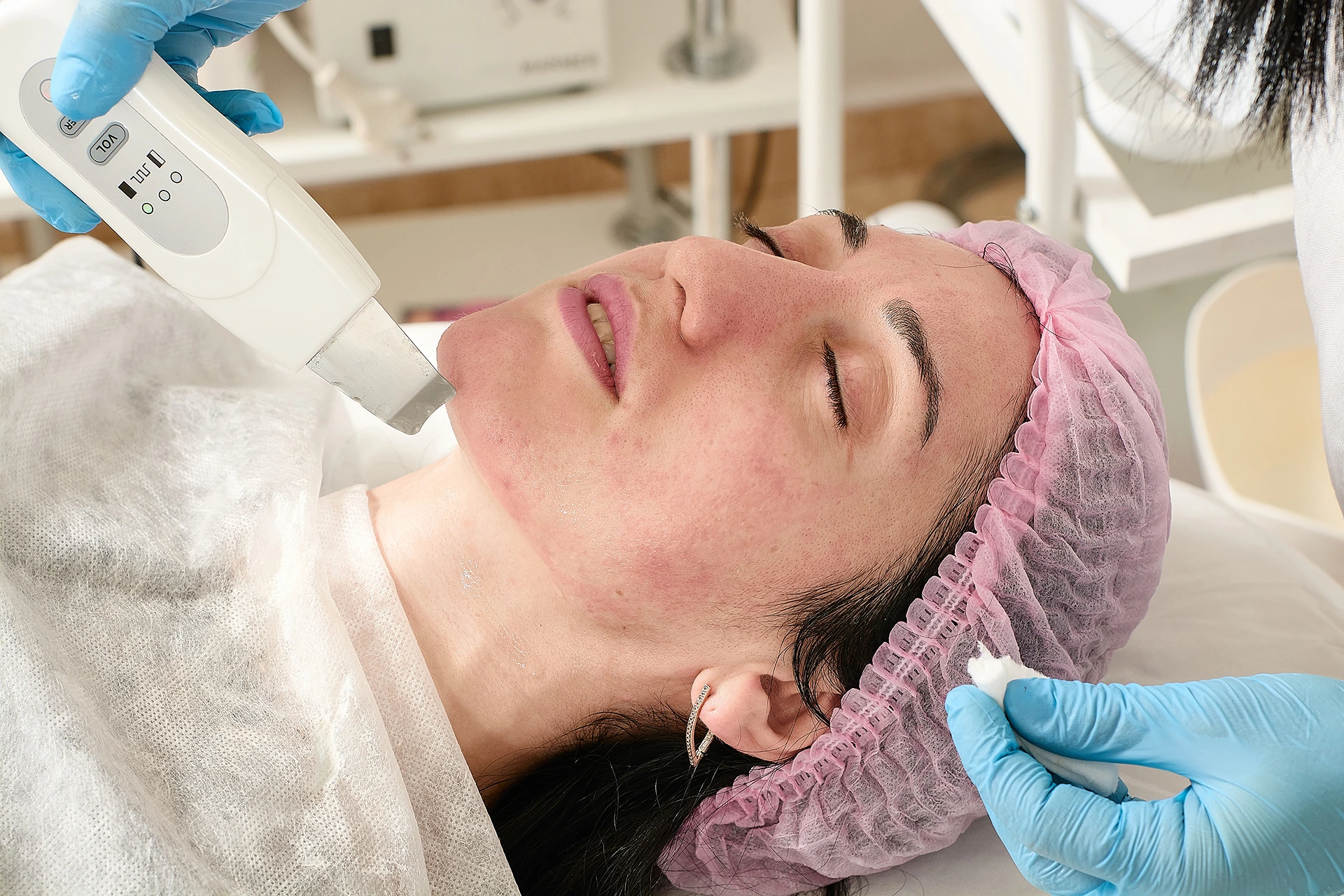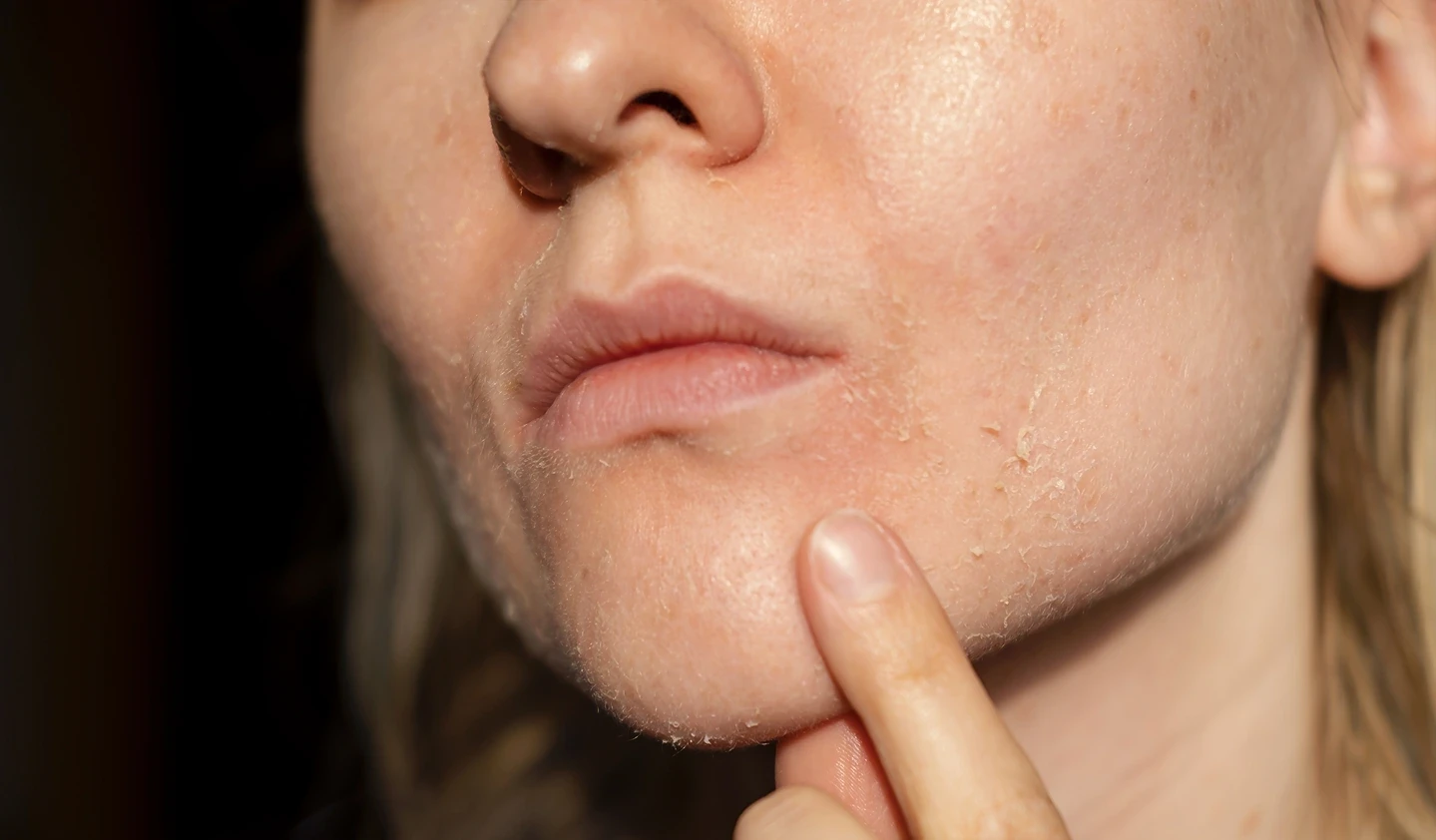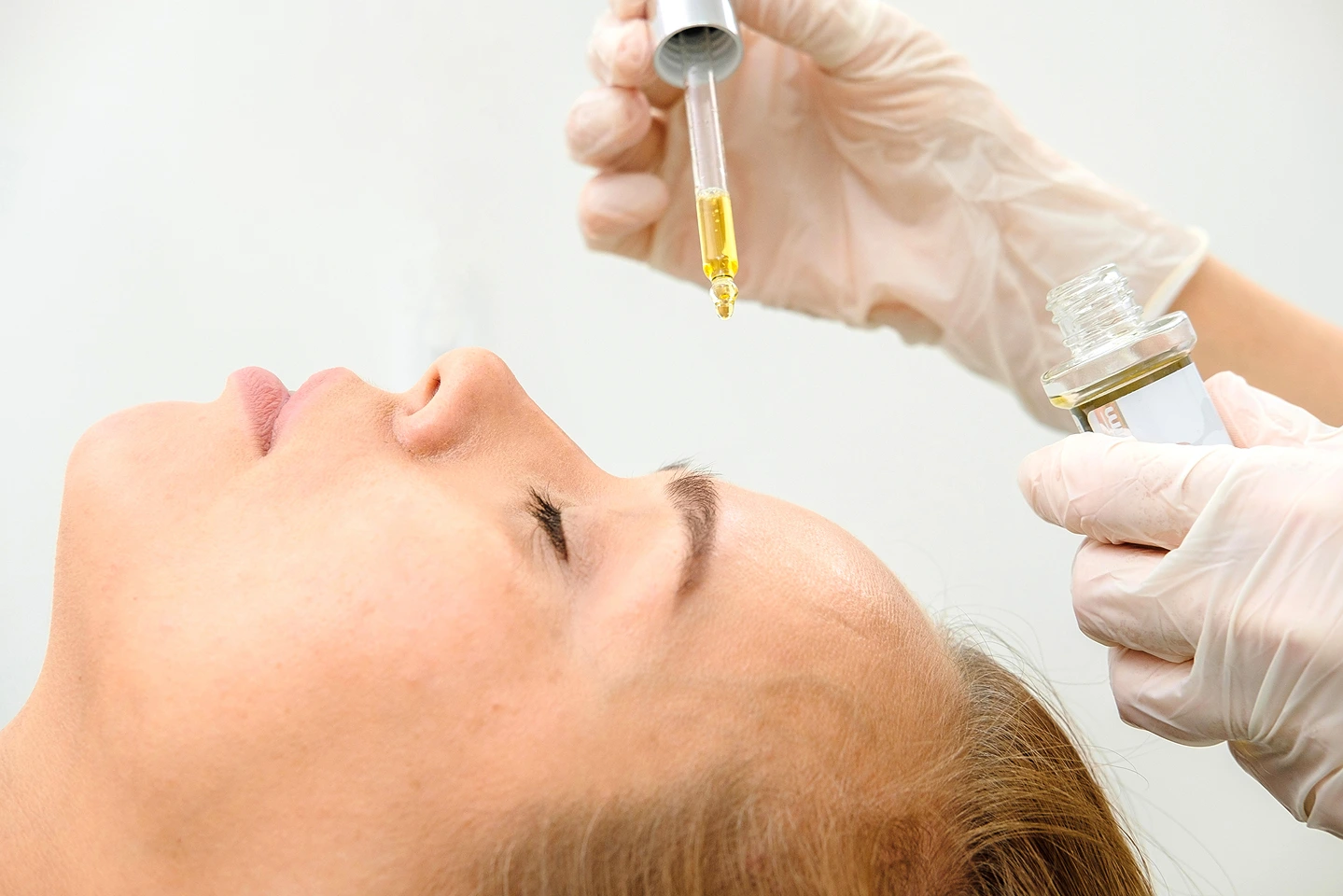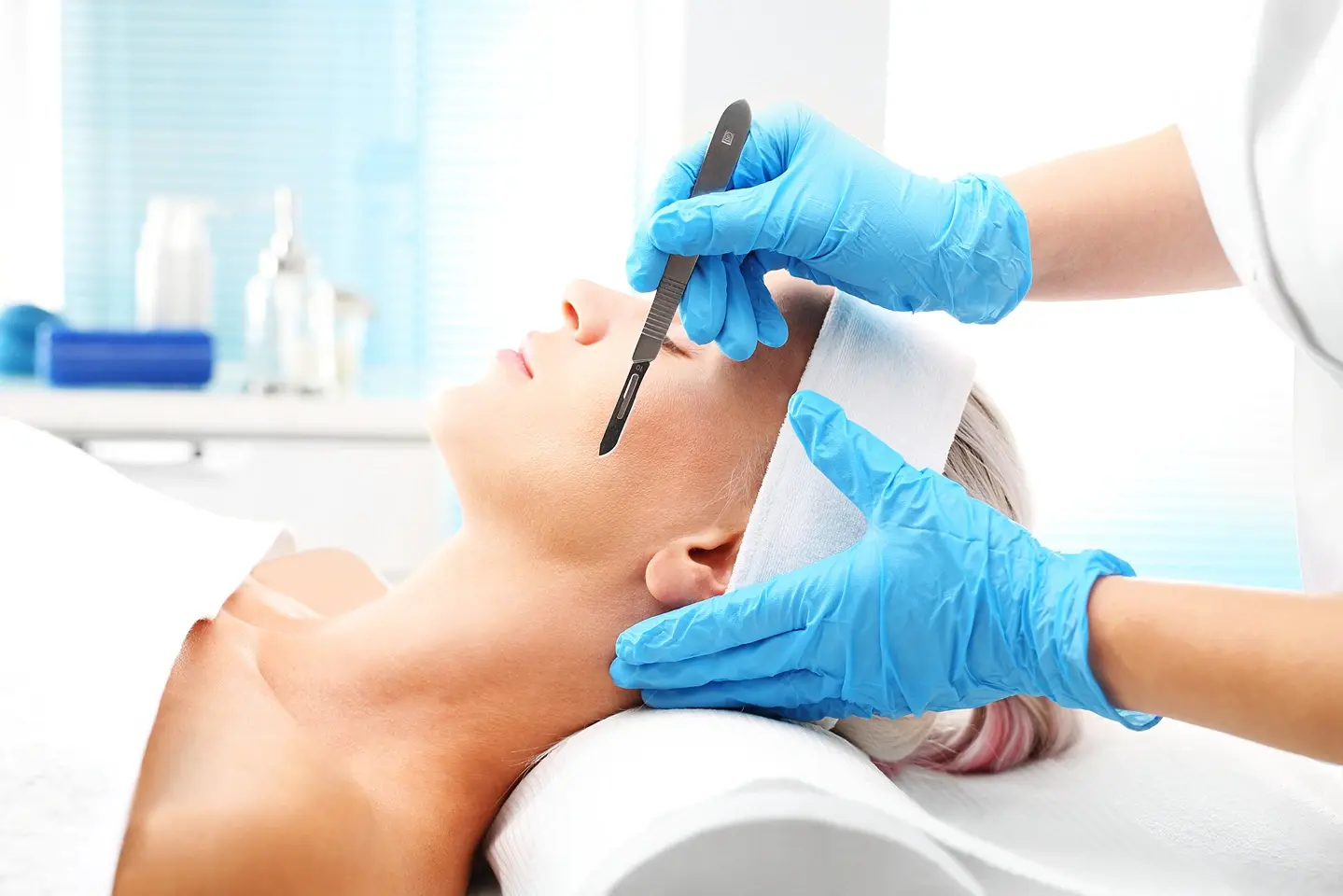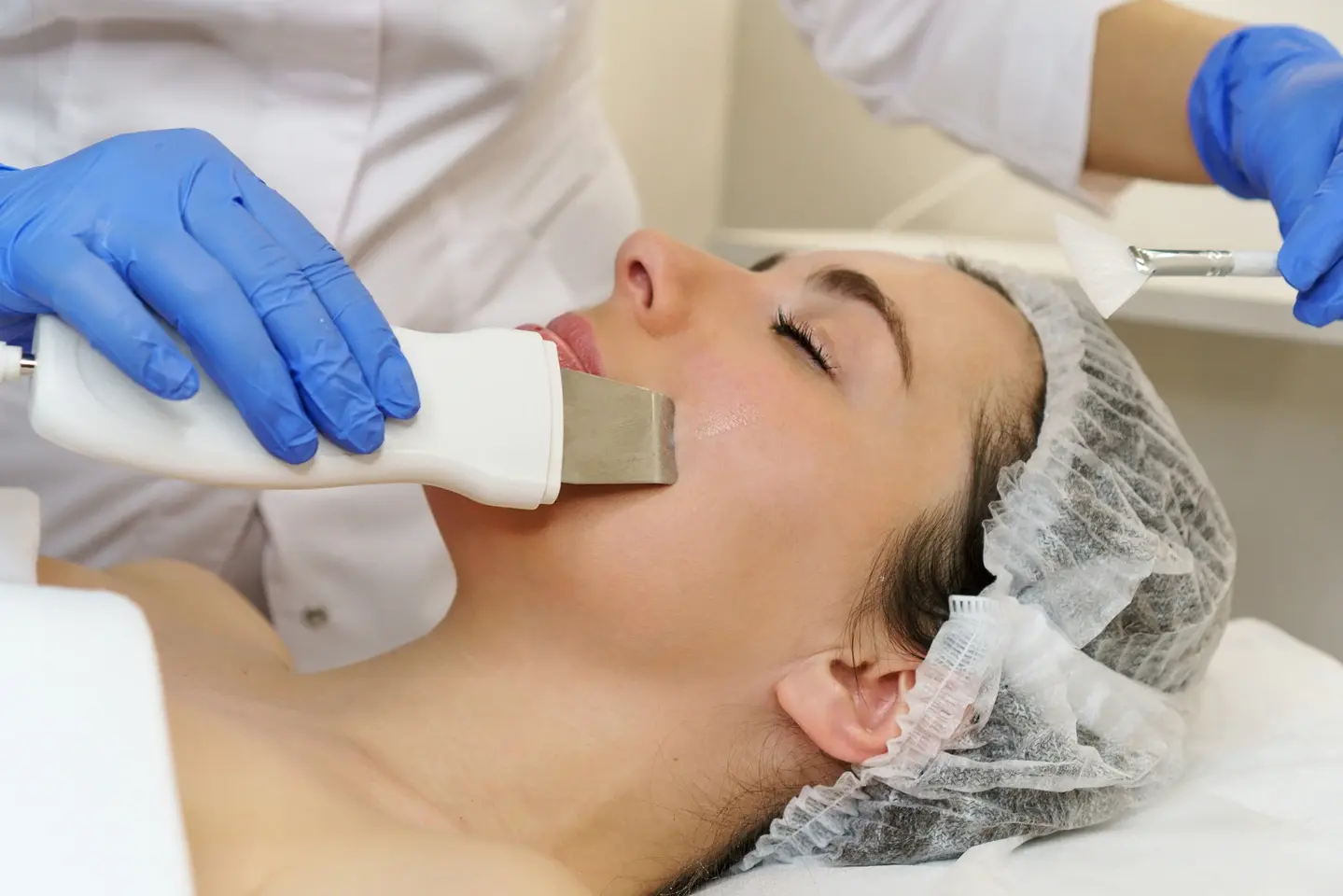
Dermaplaning is a skin treatment that uses a surgical scalpel or blade to gently shave off the top layer of dead skin cells and vellus hair, also known as “peach fuzz”. This safe and effective facial rejuvenation technique provides numerous benefits for the skin, making it a popular choice in skincare today.
During a dermaplaning treatment, the esthetician carefully glides the blade across the skin’s surface in strokes, removing the outermost layer of dull, dry skin and fine facial hair. Many find the sensation similar to a cat’s tongue licking the face. It is not painful or uncomfortable.
Dermaplaning helps reveal remarkably smoother, brighter skin by getting rid of debris that builds up on the skin’s surface. It is also highly effective at removing vellus hair, leaving the skin baby soft. The precision blade allows for more thorough exfoliation than scrubbing or chemical peels.
Some of the major benefits of dermaplaning include:
- Exfoliation – Removes dead skin cells, revealing new, radiant skin.
- De-fuzzing – Gets rid of fine vellus hair for a smooth feel.
- Product penetration – Allows better absorption of skincare products.
- Makeup application – Creates a flawless, smooth canvas for makeup.
- Reduction of acne scars – Improves the appearance of acne scarring over time.
- Anti-aging – Promotes collagen production and healthy cell turnover.
Should You Dermaplane on Dry Skin?
Yes, dermaplaning should always be performed on clean, completely dry skin for the best results and to prevent potential skin irritation. Dermaplaning on dry skin allows for a smoother gliding motion of the surgical blade across the skin’s surface. This leads to a more precise, effective treatment.
Estheticians recommend avoiding dermaplaning on damp, wet, or overly oily skin. The friction caused by the blade dragging across wet skin can result in redness, micro-tears, and discomfort. Damp skin can also affect the dermaplaning tool’s effectiveness in scraping off dead cells and vellus hair.
When dermaplaning on properly prepped dry skin, the blade easily glides over the surface without tugging or pulling. This allows for a thorough, even exfoliation and vellus hair removal without causing excess irritation to the skin.
Is Dry Skin Suitable for Dermaplaning?
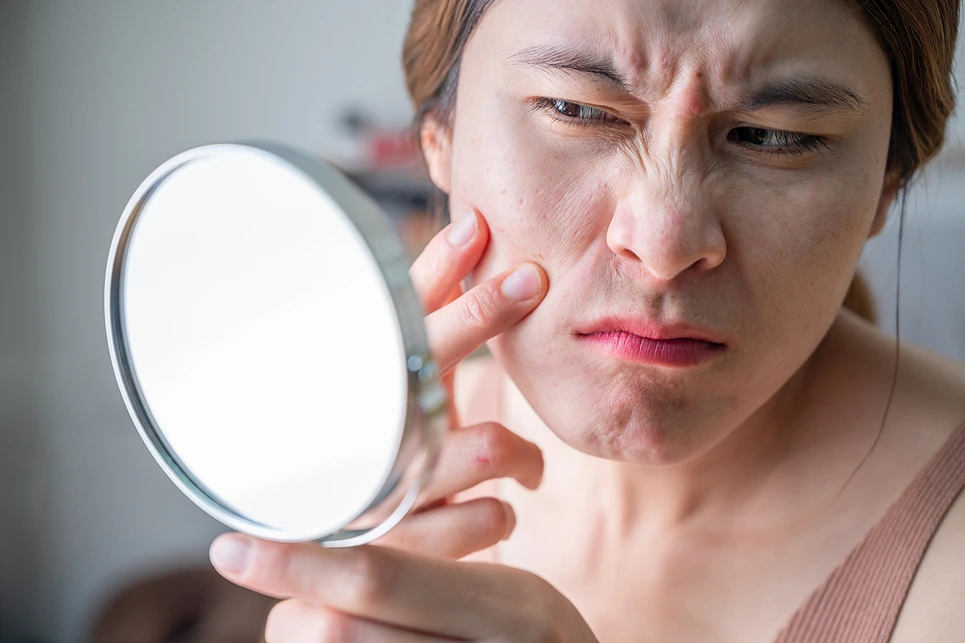
Dermaplaning on dry skin is essential for achieving the best results from this facial rejuvenation treatment. Here are some of the top reasons why dry skin is preferred:
- Precision – The dermaplaning blade can glide smoothly across dry skin in long, sweeping strokes. This allows the esthetician to precisely shave off the desired upper layers of skin.
- Control – Dry skin provides better traction and control as the blade moves across the skin’s surface. This lessens the risk of nicking or cuts.
- Efficiency – A dry dermaplaning procedure thoroughly removes dead cells, vellus hair, and debris without leaving behind a residue.
- Comfort – Dragging a blade across damp skin can cause tugging, irritation, and micro-tears. Dermaplaning dry skin is more comfortable.
- Results – Optimizing the dermaplaning technique leads to better results, including brighter, smoother, glowing skin.
Properly prepping the skin by cleansing and drying it well before dermaplaning is crucial for maximizing the treatment’s rejuvenating effects.
Can Dermaplaning on Wet or Damp Skin Cause Problems?
Yes, dermaplaning on skin that is not completely dry can lead to a number of issues that affect the treatment’s efficacy and safety. Here are some of the potential problems with dermaplaning wet or damp skin:
- Ingrown hairs – The blade may not cut vellus hairs as smoothly on wet skin, increasing ingrown hair risk.
- Infection – Excess moisture creates a breeding ground for bacteria to enter nicks and cuts.
- Redness & irritation – Tugging wet skin with the blade can cause micro-tears, leading to redness, swelling, and sensitivity.
- Uneven exfoliation – Damp skin makes it harder to remove dead cells evenly across the face.
- Less precision – Lack of traction on wet skin reduces control, potentially causing nicks and cuts.
- Post-treatment problems – An uneven shave can lead to blemishes or clogged pores after dermaplaning.
- Discomfort – The blade catching on wet skin feels rough and awkward.
Always thoroughly cleanse, dry, and prep the skin before dermaplaning treatments. Avoid applying moisturizers, oils, and serums immediately before the procedure.
What Should You Do to Prepare Your Skin for Dermaplaning?
Proper skin preparation before dermaplaning is vital for achieving the best results. Here are some tips for prepping your skin:
- Cleanse – Remove makeup, oils, and impurities by cleansing the skin before dermaplaning. Use a gentle cleanser suited for your skin type.
- Exfoliate – Gently exfoliate 2-3 days prior to remove flaky skin. Do not exfoliate immediately before.
- Avoid certain products – Discontinue retinoids, benzoyl peroxide, alpha hydroxy acids, and vitamin C products 3-5 days before dermaplaning. These can increase skin sensitivity.
- Dry completely – Pat the skin dry fully with a clean towel after cleansing. There should be no damp spots before dermaplaning.
- Trim facial hair – Clip longer hairs that may interfere with the dermaplaning blade.
- Avoid sun exposure – Stay out of the sun for 24 hours pre-treatment to avoid sensitivity.
- Skip lotion & serum – Hold off applying moisturizers, oils, and serums before your appointment.
- Remove makeup – Go makeup-free to allow for easier, more effective dermaplaning.
Properly preparing the skin helps maximize dermaplaning’s benefits while reducing the risk of side effects like redness and irritation.
What Aftercare is Needed After Dermaplaning Dry Skin?

Dermaplaning removes the top protective layer of skin, so proper aftercare is crucial for avoiding complications. Here are some aftercare tips for dermaplaning dry skin:
- Avoid sun – Stay out of direct sunlight and use SPF 30+ sunscreen to prevent UV damage.
- Apply hyaluronic acid – Hyaluronic acid serums help replenish moisture to freshly exposed skin.
- Use gentle products – Stick to mild cleansers, moisturizers, and treatments for up to a week post-treatment.
- No exfoliating – Hold off on scrubs, retinoids, and glycolic acid to allow the skin to heal.
- Watch for irritation – Monitor for excessive dryness, peeling, redness, and sensitivity.
- Moisturize diligently – Keep skin hydrated with a light, non-comedogenic moisturizer.
- Avoid makeup – Go makeup-free for 12-24 hours to allow the skin to recover.
- Cleanse gently – Use lukewarm water and mild, non-foaming cleansers to avoid stripping the skin.
- Consider recovery creams – Calming creams with niacinamide, ceramides, peptides, aloe, and centella asiatica can speed up healing.
Following proper aftercare routines minimizes the risks of sensitivity, dryness, and damage that can occur post-dermaplaning dry skin.
Is Dermaplaning Applicable for All Skin Types, Including Dry Skin?
Dermaplaning is generally safe and effective for most skin types, including normal, oily, combination, dry, and sensitive skin. However, those with very dry or severely sensitive skin should take some extra precautions.
For those with dry or sensitive skin, it is vital to avoid over-exfoliating and maintain the skin’s moisture barrier after dermaplaning. Hydrating cleansers, antioxidant serums, and rich moisturizers can help prevent dermaplaning side effects like redness, stinging, and flaking.
People with excessively dry skin may want to avoid dermaplaning in the winter when skin is driest. It is also best to reduce dermaplaning frequency to once every 4-6 weeks instead of every 3 weeks. Carefully monitor the skin’s condition between treatments.
While most dry skin types can enjoy dermaplaning’s smoothing and glowing benefits with proper prep and aftercare, always consult a dermatologist first if you have severely dry, reactive skin. They can assess your skin’s condition and tolerability.
Some general precautions for dry and sensitive skin include:
- Avoid dermaplaning if skin is cracked, inflamed, or broken
- Use a gentle touch and lightweight blade pressure
- Apply a healing balm immediately after treatment
- Always use SPF 30+ sunscreen
- Reduce treatment frequency if irritation occurs
With some minor adjustments, those with dry or sensitive skin can experience dermaplaning’s rejuvenating effects and radiant results. Proper skin conditioning before and after is key.
Key Takeaways for Dermaplaning Dry Skin
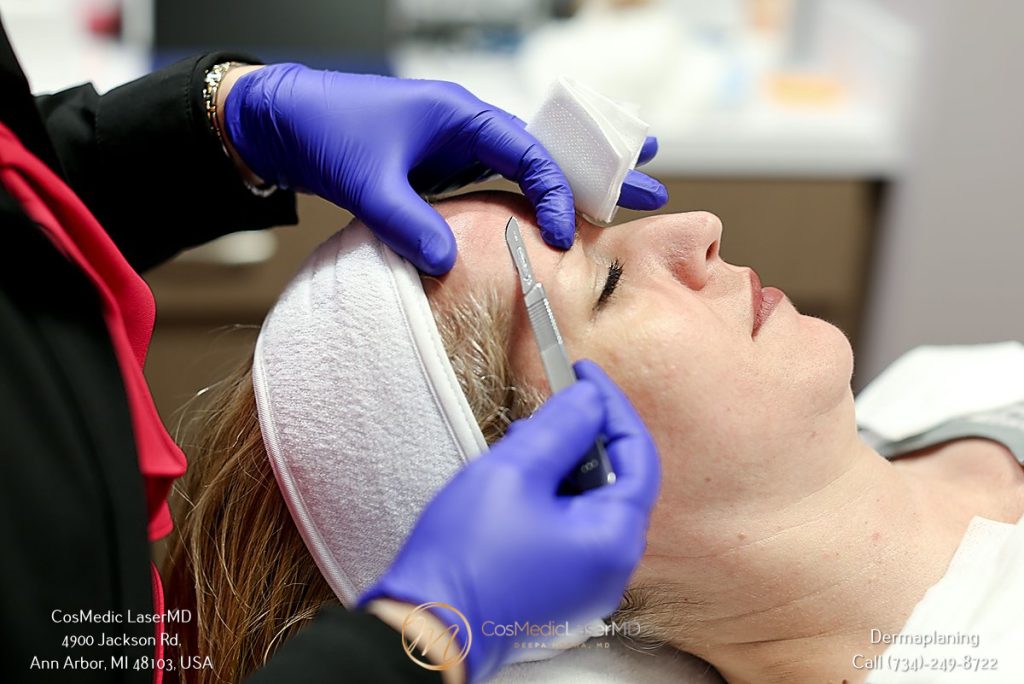
Dermaplaning is an excellent skin treatment for exfoliation and facial hair removal, but proper technique is vital, especially for dry skin types. Here are some of the key tips to remember:
- Always dermaplane on clean, completely dry skin for best results. Damp skin can cause issues.
- Dry skin allows for smooth, controlled blade gliding, making dermaplaning more effective and precise.
- Avoid dermaplaning if you have severely dry, irritated, or broken skin.
- Take extra precautions with dry skin, like avoiding over-exfoliation and using gentle products.
- Hydrate skin well before and after dermaplaning dry skin to prevent complications.
- Reduce dermaplaning frequency to once every 4-6 weeks for dry skin.
- Monitor skin closely in between treatments.
When performed correctly on properly prepped dry skin, dermaplaning can reveal gorgeous, smooth results on most skin types, including dry, sensitive skin. Follow these tips and consult an esthetician to determine if this facial treatment is suitable for your individual skin needs and concerns.

